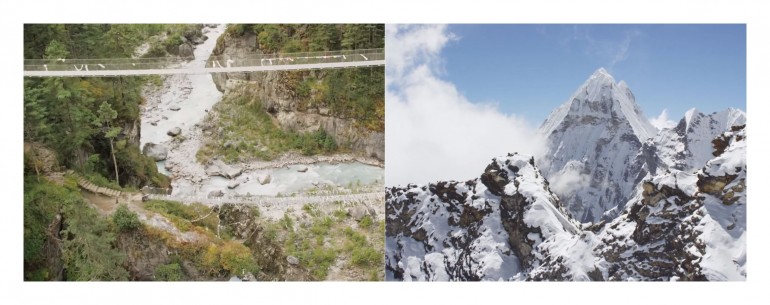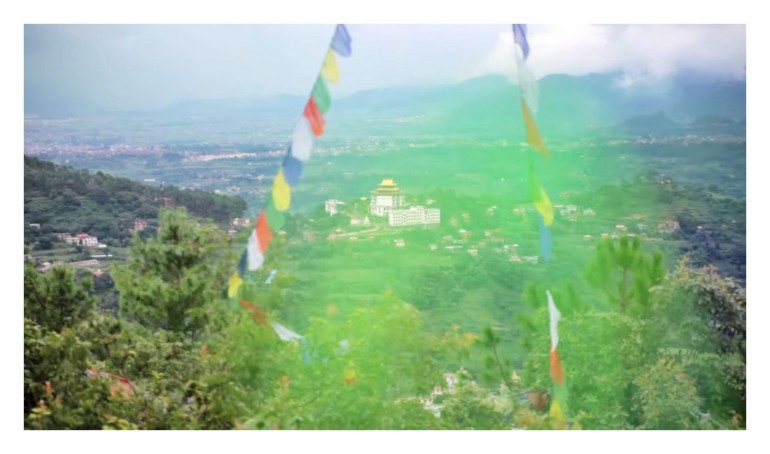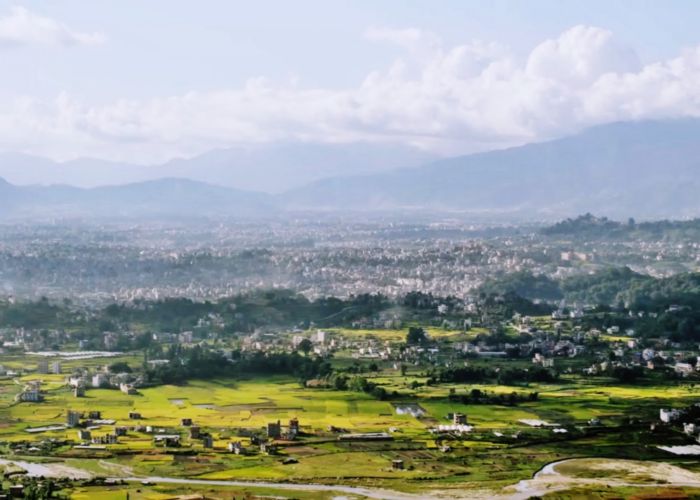When you think about Nepal, the first and most common thing that comes to your mind are the Himalayas, “the roof of the world”, the Everest and Annapurna peaks. But contrary to the common belief, there are many more things to see here and the whole country is a fascinating combination of Buddhist and Hindu culture. First, a few thing you should know before you go on this adventure:
1) The climate and the environment are really diverse. Climbing the hillside of one valley alone can have you sweltering in the shade of a banana palm in the morning and sheltering from a snowstorm in the afternoon.
The best time to visit Nepal is from late September to late November. Around this time, the weather is clear and dry, neither too cold nor to hot. The monsoon rains will have already washed away the pollution, dust and many bugs, making the mountains a lot more visible than other times. This is an excellent time for trekking. April to June are usually a little to warm for a lot of commotion, but there is an abundance of blooming flowers in the Himalayas at this time, making the area a colorful wonderland.
2) 8 of the world’s 10 highest peaks are here. Get ready for some crazy views and incredible expeditions.
3) The people of Nepal have proved to be very friendly and open, traits that have made them internationally renowned as people it’s a rare pleasure to work with or travel among. You should know that the form of greeting in Nepal is “Namaste” performed by joining both palms together. It literally means “the divine in me salutes the divine in you”.
4) Be sure to exchange back all the Nepalese currencies before you leave. They are not accepted (or even exchanged for that matter) outside of Nepal . Besides, taking currency out of the country is against the law.
5) There are daily scheduled power outages. Have a flash-light close all the times. Also, bring a universal plug and voltage adapter kit for your Electronics. Nepal uses 220V.
Now, here are the main attractions of this wonderful and alluring realm:
1. The Himalayas The roof of the world, including Mount Everest, Annapurna, Langtang National Park and The Great Himalaya Trail with numerous sightseeing, trekking, and other adventure sport opportunities, is the main purpose of a trip to Nepal to many tourists.
The roof of the world, including Mount Everest, Annapurna, Langtang National Park and The Great Himalaya Trail with numerous sightseeing, trekking, and other adventure sport opportunities, is the main purpose of a trip to Nepal to many tourists.
Nepal is most renowned for trekking – hiking from village to village, through massive hills and lush rhododendron forests and up to the peaks and glaciers of the high Himalayas. The thrillingly beautiful and culturally rich Annapurna and Everest regions are the most common choices for trekking.
Hike or take a walk around the Langtang park routes (Kyanjin Ri and Kyanjin Gompa) for impressive views and landscapes, visit lake Gosaikunda; enjoy the mesmerizing scenery and the thrills you won’t get anywhere else.
2.Kathmandu Valley
Home to Kathmandu (the c apital of Nepal), Shivapuri Nagarjun National Park, Boudhanath, medieval cities Patan and Bhaktapur, the valley is the heart of Nepal and a crossroads of cultures with numerous sacred temples and monuments.
apital of Nepal), Shivapuri Nagarjun National Park, Boudhanath, medieval cities Patan and Bhaktapur, the valley is the heart of Nepal and a crossroads of cultures with numerous sacred temples and monuments.
Kathmandu is electrifyingly exotic, with its medieval warren of alleys, Hindu temples and Buddhist stupas, and its uniquely relaxed nightlife. Visit the Boudhanath Stupa, Swayambhunath Temple, Kopan Monastery, Pashupatinath Temple, the Garden of Dreams, Durbar Square and all the other attractions that you find along the way because it is definitely worth it. It is a sneak peak into the fascinating blend of Hindu and Buddhist culture that dominates Nepal and an immensely different scenery that what we are all used to.
3. Middle Hills
The Hill Region (Pahar in Nepali) is mostly between 700 and 4,000 metres altitude. This region is split from the
Terai Range by the Mahabharat Lekh (Lesser Himalaya) and forms a geographic midland between the Terai and the Himalayas. It includes the scenic Pokhara valley, a popular base for activities in the area.
Majestic hills with green alpine meadows, forest and lakes – this is what the middle region of Far West Nepal holds ready for visitors. The nearly untouched Khaptad National Park and unique wetland of Ramaroshan area, the sacred Badimalika Temple, are just a few of the alluring things that await you here.
4. Western and Eastern Terai Visit the Bardia National Park and the Sukla Phanta Wildlife Reserve to explore the safari with a jeep, ride an elephant and go for river rafting on the Geruwa river. Stay a little longer in the Western Terai for Lumbini, Buddha’s birthplace, which is a world-class pilgrimage site, as is Janakpur, a Hindu holy city in the east.
Visit the Bardia National Park and the Sukla Phanta Wildlife Reserve to explore the safari with a jeep, ride an elephant and go for river rafting on the Geruwa river. Stay a little longer in the Western Terai for Lumbini, Buddha’s birthplace, which is a world-class pilgrimage site, as is Janakpur, a Hindu holy city in the east.
In Eastern Terai, visit the Koshi Tappu Wildlife Reserve and try bird watching, take a river trip on a canoe or dunga (wooden boat) and explore the safari to also have a chance to meet the interesting wildlife of Nepal.
Take a second look at our advice, pack your flash-light and book a flight to Nepal after consulting the complete list of hotels available in this wonderful country, on TripEconomy. Enjoy!
